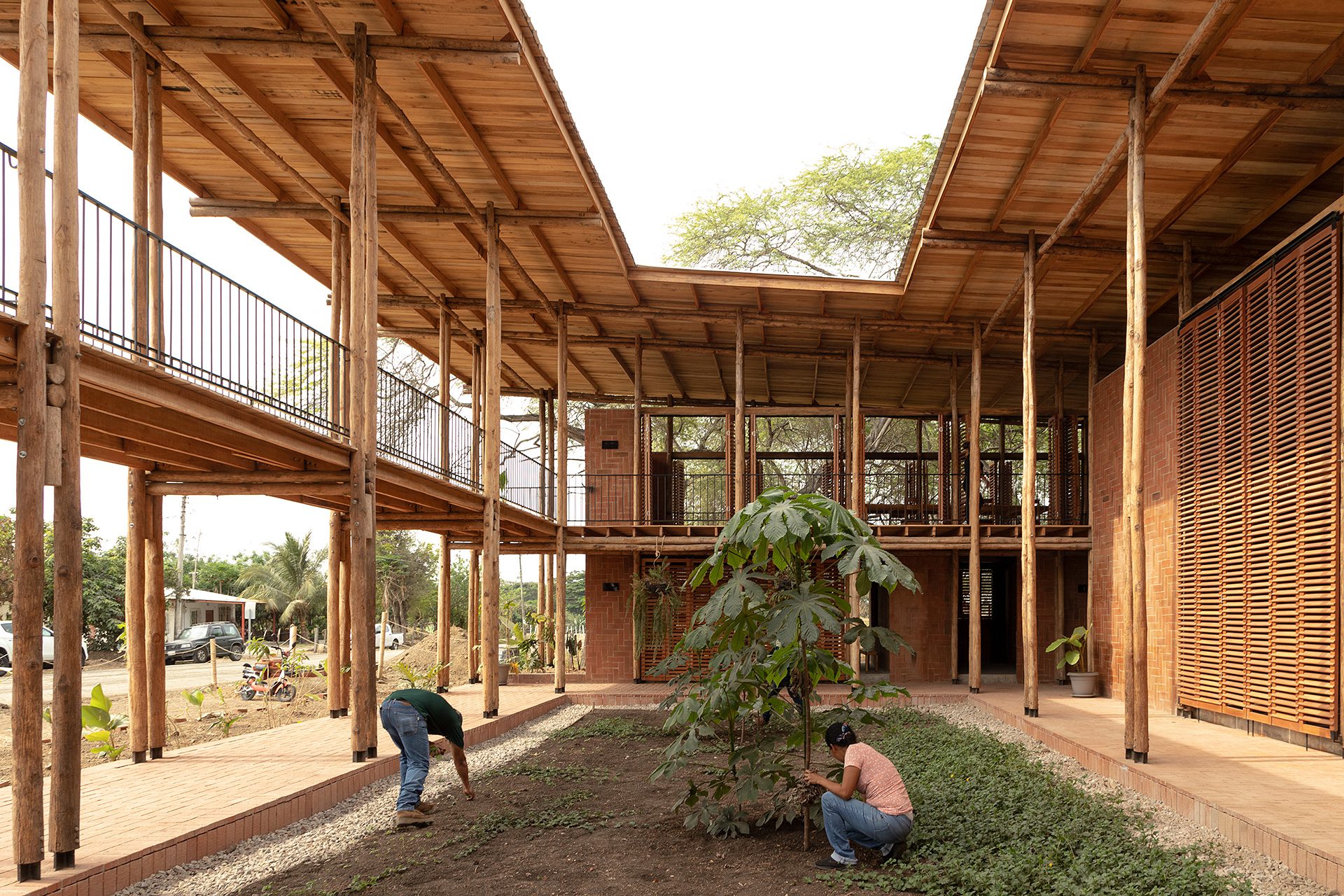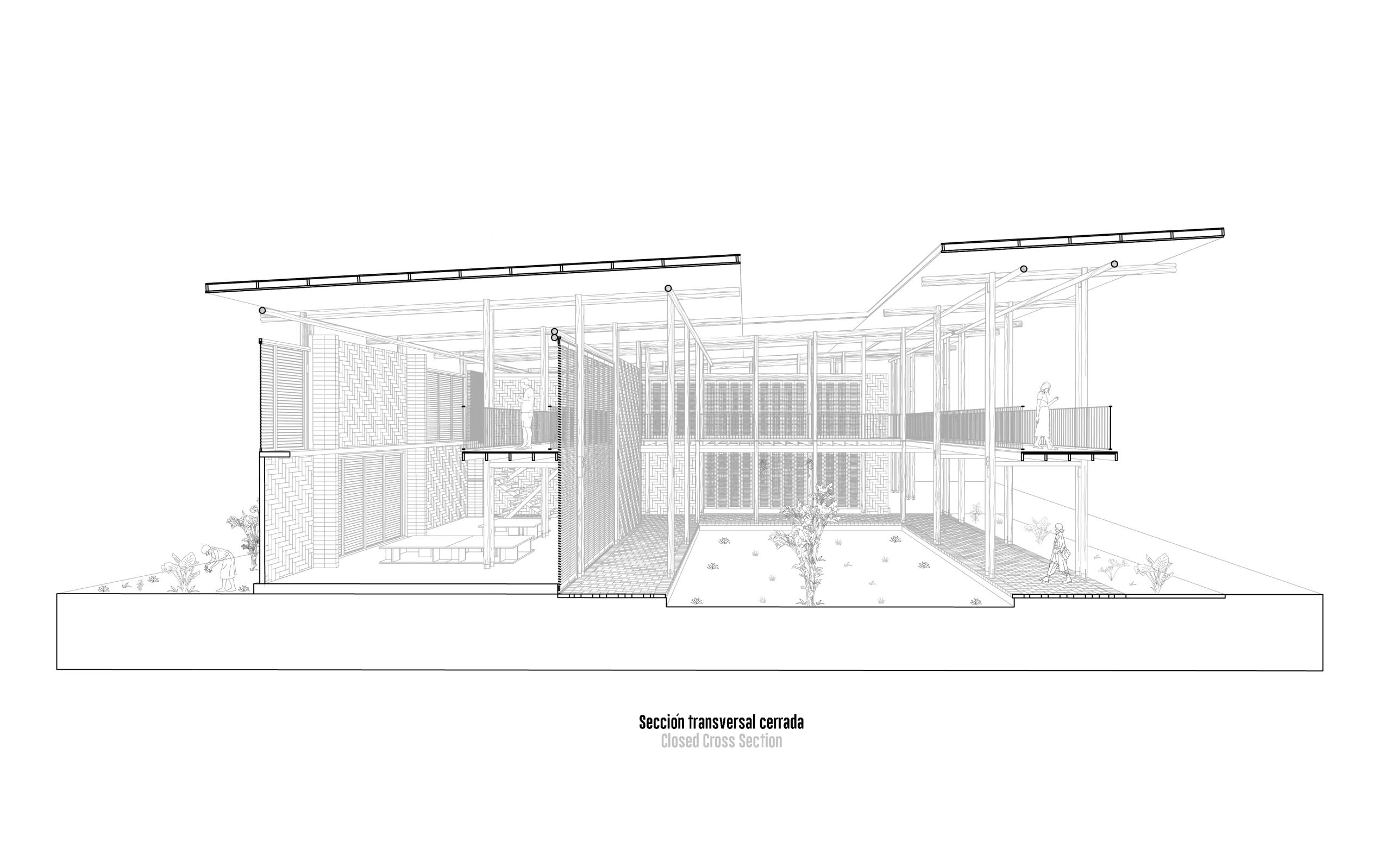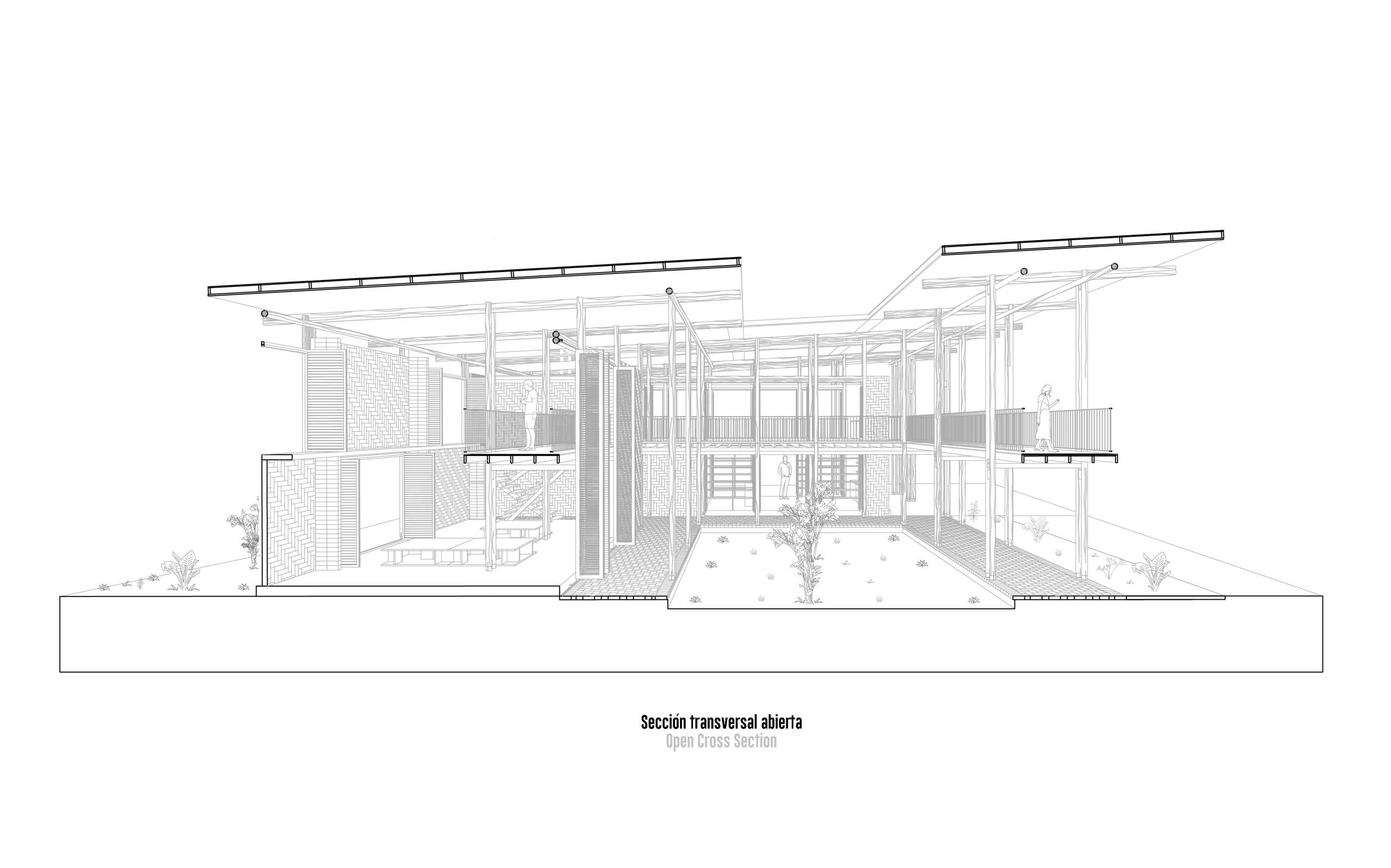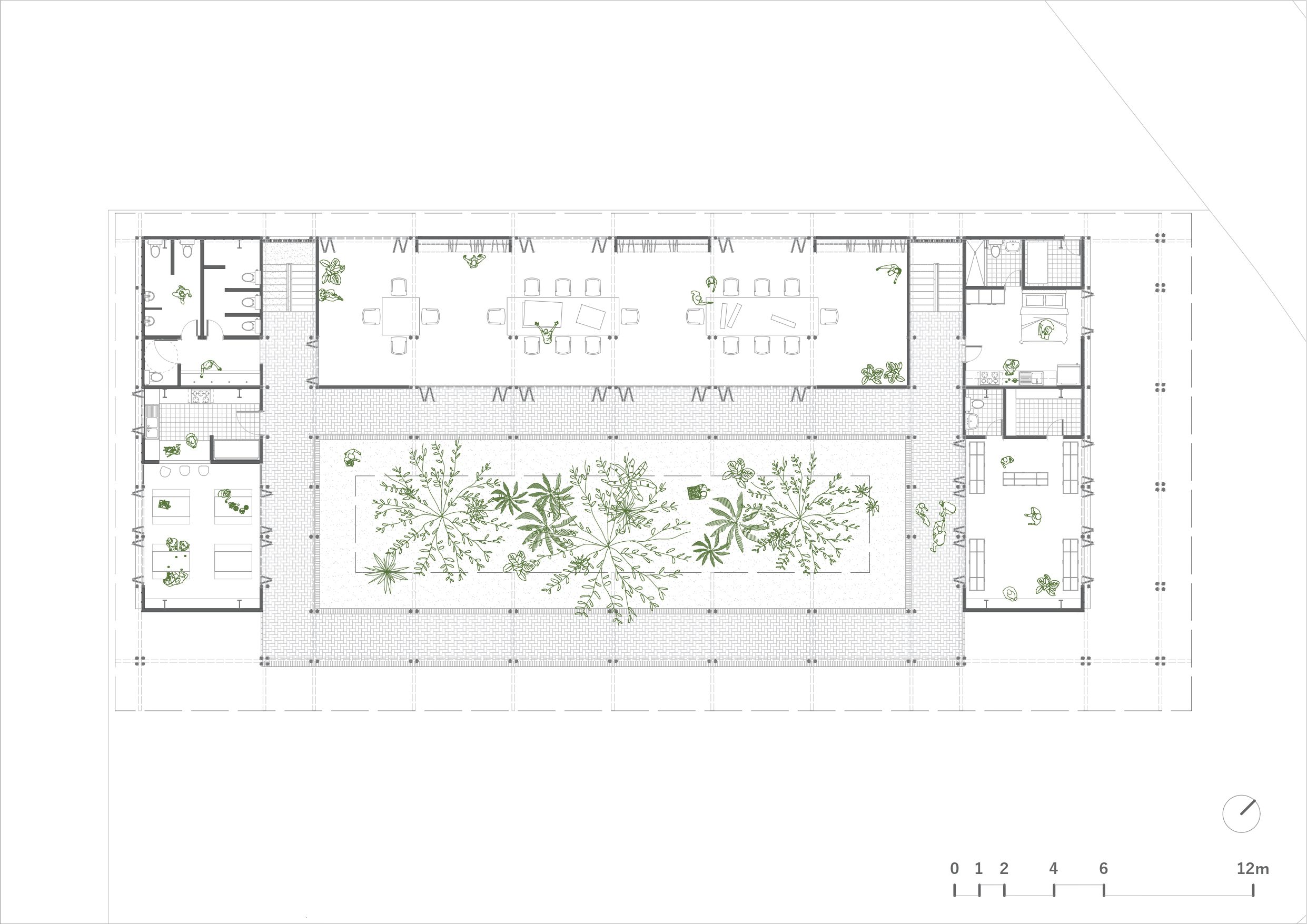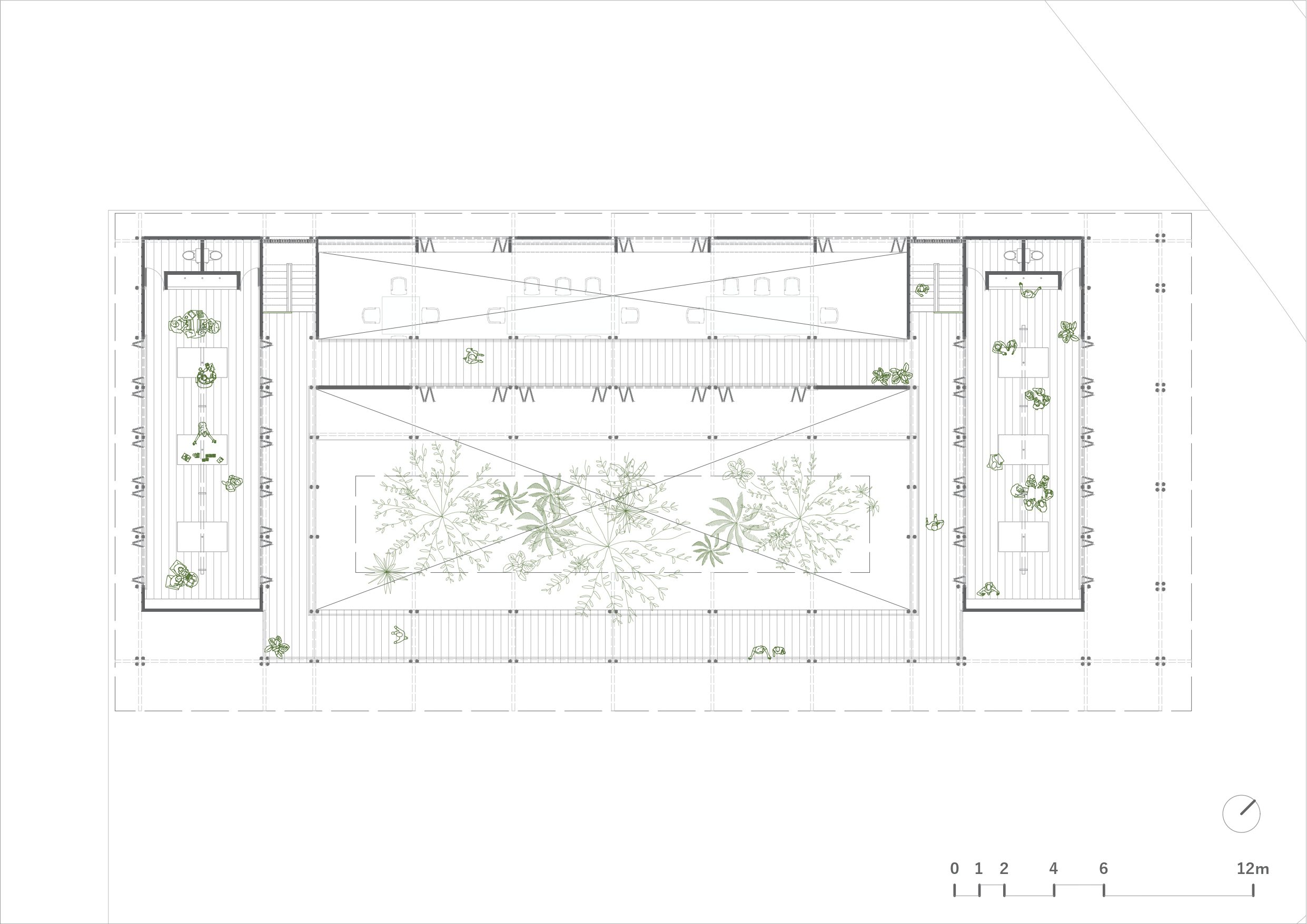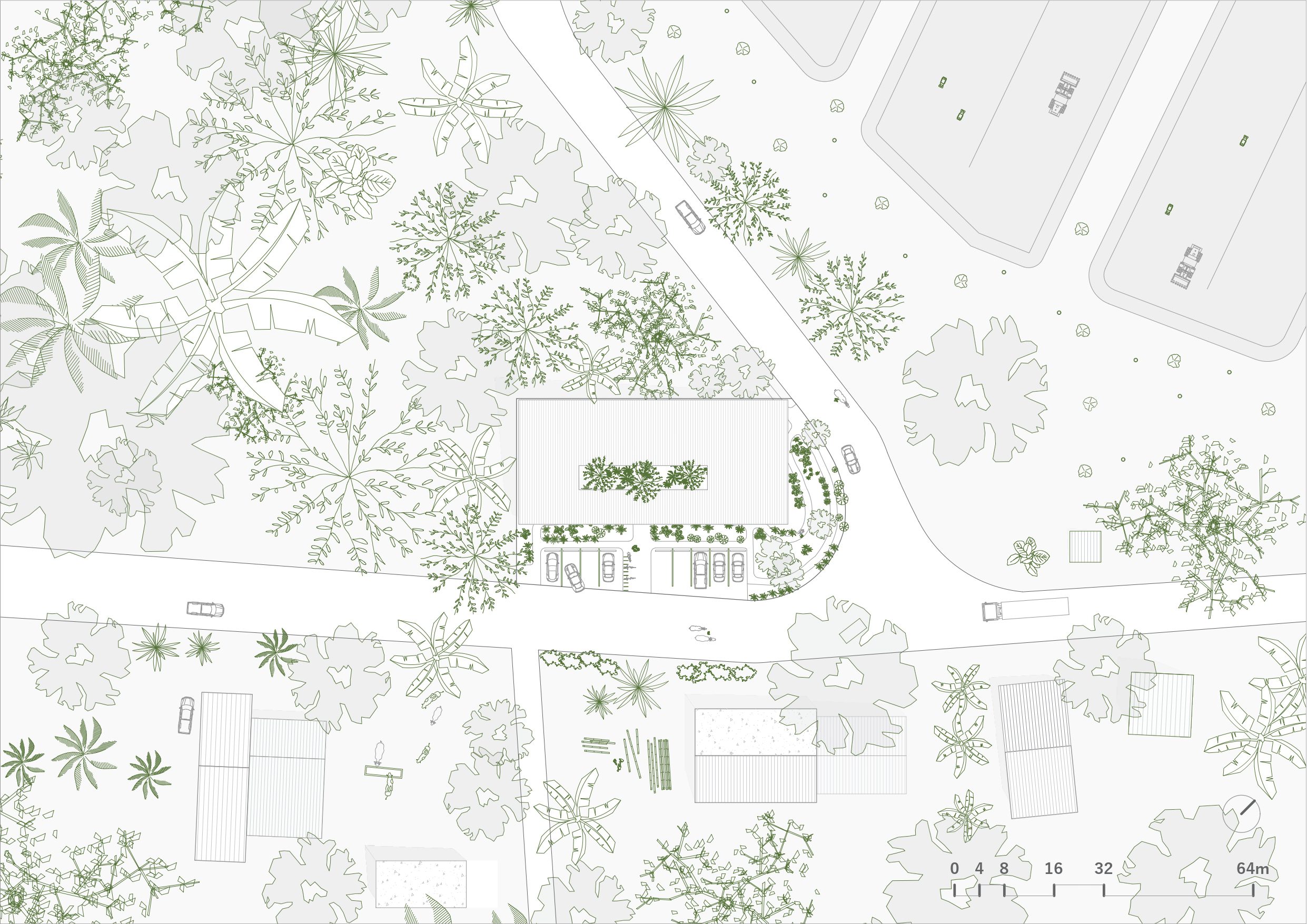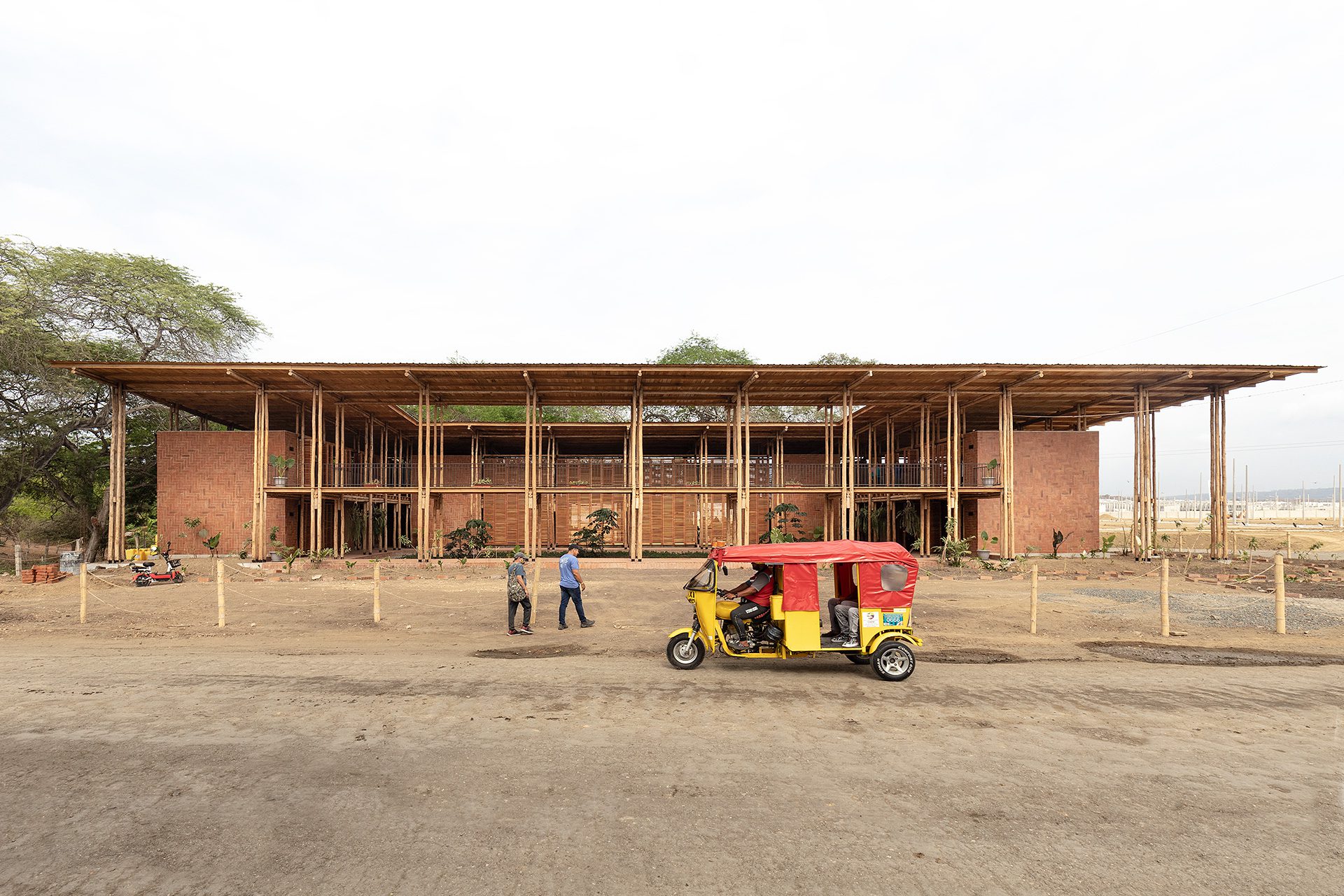Las Tejedoras/
Natura Futura + Juan Carlos Bamba
Project Details

Location(City/Country):
Chongón / Ecuador
Tipology:
Community
Year (Design/Construction):
- / 2023
Area (Net/Gross):
655 m2 / -
Operational Carbon emissions (B6) kgCO2e/m2/y:
-
Embodied Carbon emissions (A1-A3) kgCO2e/m2:
-- Wooden folding lattice doors are used to control passive ventilation
- Biophilic impact was assessed and the design is responsive to this.
- Local natural materials such as teak are used to help to reduce embodied carbon .
- A good example of lean low – carbon design
“Las Tejedoras” is situated on the outskirts of the urban community of Chongón, Ecuador. The population of this area is approximately 4,900 people, with the majority being women who are not part of economically active groups and have limited opportunities to enter the labour market. In 2009, the Young Living Foundation, dedicated to promoting the potential of communities through education and entrepreneurship, established the Young Living Academy. This academy provides education for around 150 children from low-income backgrounds, whose mothers are involved in local productive workshops. As a result, the Organization of Bromelias Artisan Women was formed, focusing on development through the creation of handmade fabrics using natural fibres. Over time, the group has grown, leading to the need for a new space.
The project, which aims to create a productive centre for learning, integration-exchange, and the sale of artisan handicrafts, is a collaborative effort involving the Young Living Foundation, Bromelias, Natura Futura, and Juan Carlos Bamba. The main objective is to use the work processes as tools for training and integration. To achieve this, several construction workshops were conducted with the community and family members of the academy to develop skills that contribute to local and environmental development.
The design of the project includes a central nave surrounded by two side naves, with a patio featuring endemic vegetation serving as a meeting and exhibition space. The theoretical training classrooms, cafeteria, and sanitary facilities are located in one of the side naves, while the other contains practical learning workshops, sleeping areas, warehouses, and a store to sell the products created in the central nave where the artisan fabrics are made. The front facade serves as a productive-exhibition gallery, creating a sense of urbanity towards the street, while the rear face is closed off to ensure greater security and control.
The main structure of the building utilises round teak wood, a material commonly used for the base supports of stilt houses in vulnerable areas of the region due to its durability and hardness. This wood holds the roof and the upper-level floor. The brick walls are constructed using the herringbone weave method, which adds strength to the interlocked walls. Wooden folding lattice doors are used to control ventilation, illumination, and provide a link between the exterior and interior spaces.
The purpose of Las Tejedoras is to serve as a space for facilitating productive development processes by engaging unemployed women through active participation, promoting local artisan techniques, and revitalising learning as a tool for empowerment. This has been facilitated through the creation of a building which deploys local labour and materials , reducing its environmental impact while achieving its programmatic requirements.
- Management and Administration: Young Living Foundation
- Collaborators: Andrea Ollague, Hector Perlaza, Fundacion La Iguana,Bromelias, Andres Ortega
- Principal Builder: Pablo Ponce
- Photography: JAG Studio
- Graphics: Andres Ortega, Cynthia Rosero
- Drone: Escape Fotografía
- Illustrations: Jaime Peña



